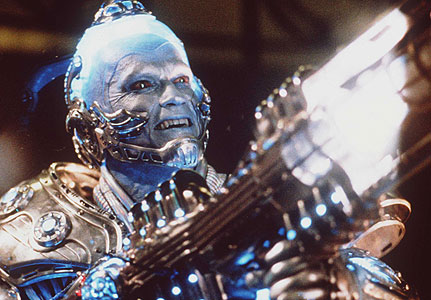I recently read Malcolm Gladwell's 2013 book,
David and Goliath, a book that discusses how underdogs disadvantages can end up benefiting them later in life.
This is the 5th Gladwell book that has received my time and I would rate it as middle of the pack, but it was still a worthy read and per usual with his books, there are many interesting anecdotes and points he makes.
While cliche and expected given the title, I enjoyed Gladwell's in-depth discussion of the actual David and Goliath encounter from biblical times. Gladwell used research from historical experts on combat in biblical times to illustrate how David's expertise as a "slinger" made the result of the fight not as surprising as it is often labeled to be. (A slinger is someone who used a slingshot in the same principle as an archer to accurately hit targets with small rocks from up to 100 yards away). In addition, history also suggests that Goliath may have had vision problems (no contacts or glasses back then) and based on his quoted text from the Bible, actually
needed David to approach
him in order to actually engage in combat. Gladwell presents the point that David and the Israelites defeated Goliath and the rest of the Philistines by attacking him in a manner in which he didn't expect and spends much of the rest of the book applying this principle to more modern circumstances.
I will address the lessons that I believe Gladwell wants the readers to learn in a bit, but I found it interesting that the Bible and those teaching it's scripture typically convey the David/Goliath story's result as miraculous, when military history suggests otherwise. I believe that reading this story with the full litany of facts perhaps allows the reader to arrive at a different conclusion than is typically presented in the Bible.
Non-Traditional Means of Victory
Another of the interesting factoids Gladwell presents is a study made by the political scientist Ivan Arreguin-Toft, in which he found that in those instances where the weaker party fought with unconventional or guerrilla tactics, they won over 60% of the time. (See Vietnam, Russia's fight against Afghanistan, the United States Revolutionary War, etc).
Gladwell went on to present another case of a California middle school girls' basketball team employing a full-court press tactic to win games, and the resulting backlash from other coaches who believed that the team was not participating in traditional or fair basketball tactics.
These examples illustrate the advantage of employing non-traditional means to gain an advantage in combat or friendly competition and in relation to my own thoughts, I believe that people feel pressured to conform to societal norms, even with they believe they could benefit and they
could benefit others more if the employed non-traditional measures.
Smaller Class Size?
Considering that the odds are decent that I will be a parent at some point in my life and that those bearing my DNA will likely attend school, my own current interests with education policy, and multitude of friends in education, I found the discussion of the relationship between class size and education fascinating. Gladwell includes this discussion along with other similar storylines, including wealth hardship (dyslexia for example) in relation to the concept of the inverted U-curve.
The idea is that for some things in life, benefits accrue up to a point, then have diminishing returns, and then actually decrease benefits altogether. Specifically with regard to class-size, Gladwell references several studies to chronicle that benefits
do accrue as class size diminishes, if the class size were starting at 40 or 50. However, if class size falls below 12 or 15, there are not enough viewpoints to provide a broad base of perspectives and maintain balance in the classroom (the study indicates that the ideal class size is likely 18 students). The smaller class size allows a domineering personality to take over, making it difficult for introverts to voice their opinions in class or for teachers to maintain control against a disruptive personality.
Parents believe that smaller class size is helpful and push for this for their children. Colleges and high schools seize upon this belief and include their class size in many of the statistics they publish to try to win top children (and their parents). Gladwell references a school called Hotchkiss in Lakeville, Connecticut that is apparently one of the premier boarding schools in America, charging its attendees $50,000 annually. Despite it's 12 Steinway pianos and a Fazoli, it's average class size is 12. Thus not only is Hotchkiss full of attendees with similar socio-economic standing with similar perspectives and viewpoints, it has classrooms with a limited number of viewpoints to air these limited viewpoints.
Big Fish in a Small Pond or Small Fish in a Big Pond
Gladwell discusses the story of Monet, Manet, Cezanne, Renoit, and Pisarro, a group of artists in the mid-19th century Paris who are now known as the founders of the Impressionist movement. In the mid 1850s, all aspiring artists in Paris submitted works to an annual competition. Those whose works were selected for the competition received nearly instant acclaim and saw the value of their works increase. The Impressionists had long been frustrated by their works lack of acceptance into the Salon competition. To make a long story short, these artists decided to create their own venue to showcase their works, and in this smaller arena where they were competing with fewer artists, they became quite successful. As anyone with any knowledge of art would know (I cannot include myself in this group), this separate venue launched the artists into fame.
Gladwell also discussed the story of Ms. Caroline Sacks, a brilliant student who ended up attending Brown University to study biology. Due to the extreme competition at Brown and difficulty with organic chemistry, Sacks lost confidence in her abilities and never pursued her intended career. While some might divert this discussion into Ms. Sacks' work ethic, Gladwell's point is that the pressures of high-intensity environments can reduce the confidence of individuals. This point is furthered by Gladwell's analysis that shows that the bottom third of students at Harvard drop out with the same frequency as lower tier students at a less prestigious university. To quote Gladwell:
"We have a group of high achievers at Hartwick and a group of lower achievers at Harvard...each is studying similar subjects with similar textbooks, but the overwhelming majority of Hartwick All-Stars get what they want and end up as engineers or biologists. Meanwhile, the lower achievers at Harvard are so demoralized by their experience that many of them drop out of science entirely and transfer to a science major."
There are a multitude of avenues along which to discuss this, varying from the need (which can be debated) for additional STEM degrees or the competitive nature of America's education system and America in general. Those of us who have experienced the joy and defeat of the curve in college know all too well that there are a limited number of job offers for top graduates - for any major - and that those who succeed should be rewarded. Gladwell's statistics illustrate the impact that competition can have on confidence in the classroom (and in all likelihood, life in general). How can society ensure that capable individuals are not left behind when they encounter stiff competition while still maintaining the benefits that American ascribe to the healthy competition of capitalism and essentially what becomes capitalism within education?
Gladwell's point is that people whether they should place themselves as a Big Fish in a Small Pond or as a Small Fish in a Big Pond given how competition can erode confidence. Yet, is it worth taking a step back to question why brilliant people can be so devastated and shaken from their confidence that they abandon the pursuit of what they love? Should we question whether workplace and education competition truly results in bringing the cream to the top? Taking a bit of latitude here, it is my opinion that this system leads to much of the greed in this country, exemplified by the meltdown that occurred in the bowels of lower Manhattan in 2007 and 2008.
Benefits of Dyslexia?
Would anyone think that dyslexia could help one's career? Gladwell delves into the intricacies of answering this question by discussing how those who have had to deal with the unfortunate difficulties of dyslexia have frequently risen above these difficulties and accomplished a great deal. Gladwell applies this same principle to other difficulties, such as losing a parent at an early age or growing up in a destitute household and points out statistics (for example, the number of presidents who had a parent die young) that also illustrate how having difficulties
and overcoming them can benefit people later in life.
As someone who frankly has led a very privileged life, I have often wondered how my life would be different if I had experienced any significant difficulties. I have many close friends who I respect greatly that have suffered difficulties and can see in their lives the benefits that these unfortunate circumstances have produced, as unfortunate as they may be. Gladwell discusses "near misses" and "remote misses" with respect to the bombing of Great Britain in World War II and how those citizens who had experienced multiple remote misses gained confidence and courage. I can see how many of my friends have gained courage from both their near and remote misses and have immense respect for they have had to endure.
Years ago, I can distinctly remember wondering and even wishing for difficult circumstances to arise in my life to have some event or condition to overcome and from which to potentially benefit. Yet, I am also extremely thankful for the position and resources into which I was born and realize that it might even be offensive to some not presume that many individuals born into difficult circumstances would not give anything to have additional resources with which to move ahead in life.
In my opinion, the biggest question this book presents is whether or not certain difficulties are worthwhile. Should we ever want to be subjected to commonly perceived difficulties? To take this a step further, would we want our children or loved ones to face these challenges - even if statistics say benefits can be gained or at the very least, the challenges aren't as difficult as often perceived?
Try checking out the book from the library or on Kindle and enjoy the read.
Have a great day!






